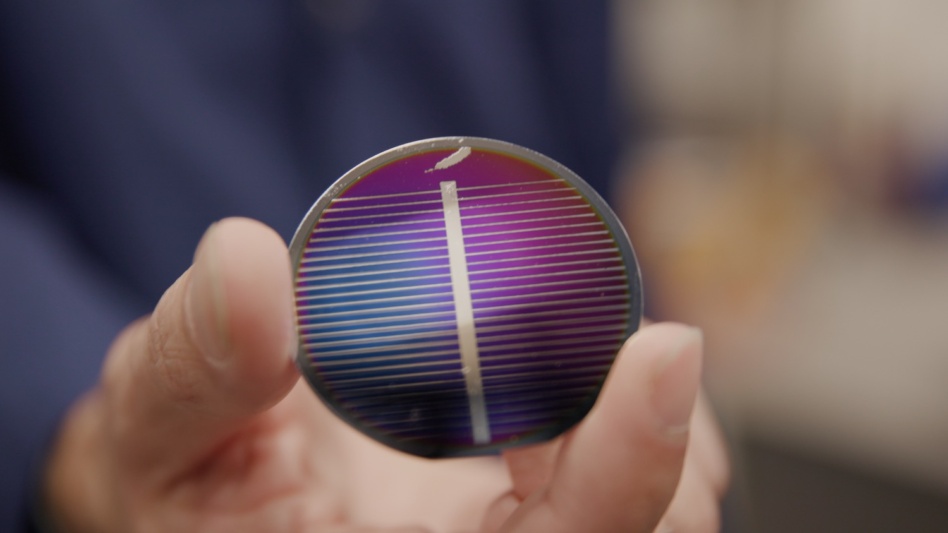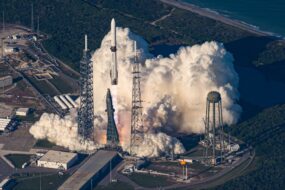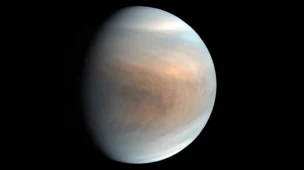Blue Origin is opening up about some of its latest interplanetary work. Last week, the Washington company announced two science initiatives supporting humanity’s efforts to push outward into the cosmos.
On Thursday, NASA awarded Blue Origin a contract to provide launch services for the ESCAPADE mission to study the magnetosphere of Mars. And on Friday, the company shared more information about Blue Alchemist, a project that has apparently been producing solar cells and transmission wire from lunar regolith simulants for the past two years.
ESCAPADE
Last week, Blue announced that it won a NASA contract to launch the Escape and Plasma Acceleration and Dynamics Explorers (ESCAPADE) mission in late 2024 to study the Martian magnetosphere. UC Berkeley’s Space Sciences Laboratory (SSL) is leading, managing and operating the ESCAPADE mission.
Blue snagged the launch deal through the agency’s Venture-Class Acquisition of Dedicated and Rideshare (VADR) launch services contract, which are used for hardier payloads that can tolerate higher risk. This contract is worth up to $300M over five years across all 13 providers. ESCAPADE is slated to launch on New Glenn.
The Martian magnetosphere: As NASA plans for future crewed missions to Mars, it’s ramping up its research efforts to understand everything that could affect future pioneers. The magnetosphere, or the magnetized region of space around the planet, affects everything from communication signals to atmospheric escape, Robert Lillis, SSL researcher and principal investigator of the ESCAPADE mission, told Payload via email.
“Understanding the space weather environment at Mars is one of the pieces of the knowledge puzzle necessary to sending humans there safely in the next decade or two,” said Lillis. “Why? First of all, the ionosphere can interfere with ground-ground and ground-orbit communications and GPS signals. Second, the magnetospheric configuration can affect the trajectories of high-energy solar protons that can pose a danger to astronauts in Martian orbit.”
ESCAPADE’s approach: Two spacecraft named Blue and Gold will orbit Mars together, measuring ions, magnetic fields, electrons, and thermal plasma, while also snapping thermal infrared images. Blue and Gold will exchange readings to observe divergent findings and gather more timely information.
“With two spacecraft, you can disentangle time versus space and be both upstream and downstream of Mars at the same time to measure the real-time effect of solar wind gusts on atmospheric escape from the red planet,” Lillis said.
Blue Alchemist
Lunar regolith, the dust and rock that makes up the surface of the Moon, is jam-packed full of materials that are useful for producing solar panels, rocket fuel, and other resources that could help us establish a sustained lunar presence. So far, though, there hasn’t been a ton of progress towards actually using regolith to build these products.
Now, Blue Origin says it’s made a breakthrough in manufacturing solar cells and transmission wire from simulated lunar regolith, which contains only materials found in actual lunar regolith. Blue used a process called molten regolith electrolysis, which pumps a current of energy through the regolith to extract materials including aluminum, silicon, and iron.
- “While typical silicon purification methods on Earth use large amounts of toxic and explosive chemicals, our process uses just sunlight and the silicon from our reactor,” the blog post reads.
Blue Origin is not yet working with NASA on this project. “Although our vision is technically ambitious, our technology is real now,” the company wrote. “Blue Origin’s goal of producing solar power using only lunar resources is aligned with NASA’s highest priority Moon-to-Mars infrastructure development objective.”




